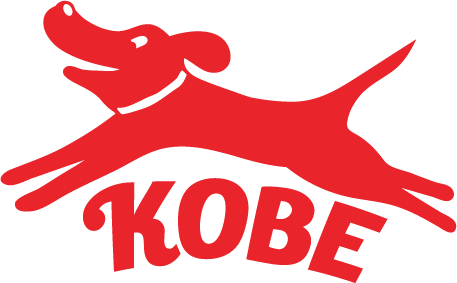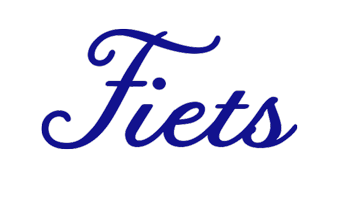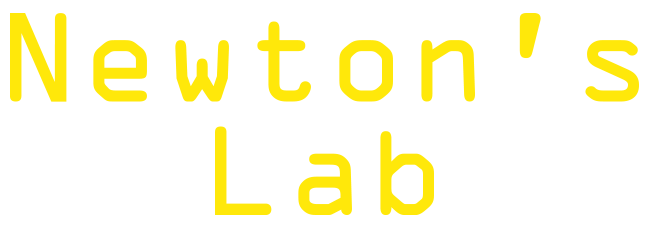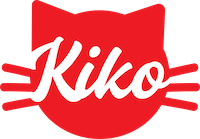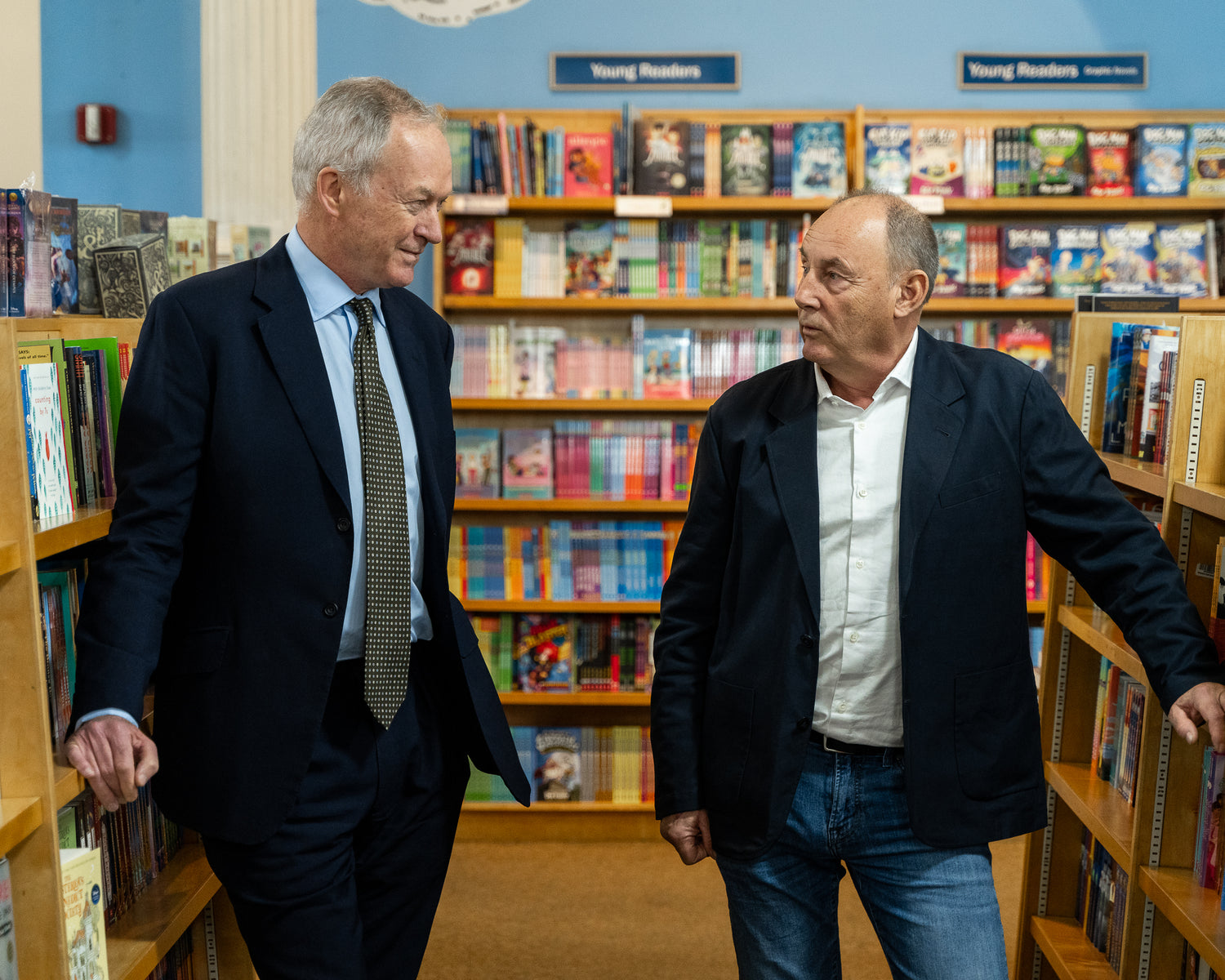The common thread between Barnes & Noble and Kikkerland is curiosity. Both books and gifts hold a special place in the heart, carrying an omnipotent emotional resonance. Bookstores and gift stores serve as nostalgic havens for discovery.
To further explore this “curiosity” we had a chat with the captivating James Daunt, CEO of Barnes & Noble, and ever-charming Jan van der Lande, Founder of Kikkerland. These two leaders are at the helm of the organizations that make the 2024 Design Challenge possible.

How would you describe your company in just one word?
James Daunt: It’s reading. That’s what we’re about.
Jan van der Lande: It's a combination of two words. Fun-nique, fun and unique. That's what we're looking for. We're not so serious, but we're looking for something unique, something very special. So, it’s a new word.
James, how do you define Barnes & Noble, and what makes it different from other bookstores?
James Daunt: Well, I hope they're not too different from other bookstores in as much as I think each bookstore should espouse the personality of the people who work in it and reflect the interests of the community it serves.
That's what all good bookstores do, whether they're independent bookstores, or in our case, a chain.
The challenge of a chain is how do you promote those values? Which require something distinctive, when the natural propensity for a chain is to have something that's sort of homogenous and similar, which is the antithesis of what we should be. That's the challenge. When you become too big.

What have been the most significant changes in the past few years for Barnes & Noble?
James Daunt: The significant change has been to try to promote exactly that sense of ownership and responsibility that the individual store teams have for their bookstore, and thereby to promote much better presentation of books, much better curation, better service, ultimately, to produce better bookstores, which we needed to do because the business was in big trouble a few years ago.
Now, I think having martial data, that inventiveness of the individual teams, we are now not in trouble, sales are going up and the stores are doing really well. But that is all about empowering local teams.
Same question for you, Jan. Have there been any big changes in the past few years at Kikkerland?
Jan van der Lande: Well, we had the pandemic, that was a big event for everybody, and also for businesses. I think we sailed through it well. We got lucky too, our long-standing customers were resilient and continued to place orders with us, thinking of us.
During that time, we did not take our foot off the pedal when it came to products. That was our challenge, to stay focused on what we do well, which is bringing new and exciting items to market. It's nice to see that everything is back, and people appreciate what we're doing. Getting good results like that.

James, where is your favorite aisle to browse at Barnes & Noble? What is your genre?
James Daunt: I tend to read a lot of novels, but that's partly because professionally, that's where the biggest sales. I also love reading new novels, particularly first novels. That sense of the unknown and discovery. At the same time, I always read serious books, which are predominantly history, and some biographies and other non-fiction, but history is the section I like best.
I've been a bookseller for a very long time and there's only one part of a bookstore that I've never managed to understand- it's not that I don't like it, I just don't understand it, and that's manga, which we do brilliantly, which is full of kids spending a tremendous amount of time, so I enjoy it. I enjoy looking at it but I don’t understand it (laughs). I think I'm just too old to get to grips with that. So, that's the one sort of black box in terms of the store.
Jan, what about you?
Jan van der Lande: I tend to read more serious business books. Right now, I'm reading a book biography from Werner Herzog, and he's one of my favorite film directors. He was born in south of Germany, right after the war. He grew up very, very poor. It's just very interesting thing to read. I’m about halfway, but yeah, I like autobiographies, history. I like to learn a lot of things.

Things are evolving very fast nowadays, like with AI, and I'd like to know how the future is going to look like, how we can, you know, deal with that. So, I like to learn things. If there's something I don't like, I won't read it.
People like different categories of books, some books that I wouldn't like. Probably like gossip books. Maybe manga (laughs), I don't hate it, I actually like the graphics a lot.
James, can talk a little bit about the in-store shopping experience in Barnes & Noble. Is there a sort of philosophy around how they're designed?
James Daunt: Well, we're changing how they're designed a lot. Bookstores for us have to be places of discovery. They must be very welcoming. Those two things are what we have to our advantage, as opposed to the internet, which, obviously, Amazon or anybody else can supply exactly the same things, but extremely easily. So, the bookstores have to be warm and inviting, and presented attractively.
To achieve that, we've moved steadily from a architecture which was designed to get the maximum number of books in, and so it tended to exist like library’s, ranks of bookcases to something which creates a browsing experience, which is more about creating rooms to separate off the different sections. We also had to work out how we sell things that are not books, alongside books in a way that's visually very appealing.
Everything that we sell alongside books should resonate with people who enjoy books. So, they should have an educational aspect to them, something that's fun, something that provokes curiosity, their imagination, and how we do that requires furniture, which allows us to display those in the most attractive way.

Barnes & Noble redesigned Upper Westside location. Photo credit: Maansi Srivastava for NY Times
We are increasingly using flexible furniture so we can display things that are not the typical size of books on tables and bookshelves. Flexibility is important. I think we're slowly getting better at that largely by imitating people from around the world who know how to do this, and that's particularly in the Far East, the Japanese above all, but also Taiwanese, Koreans, wonderful design ideas, and within Europe, the Italians who still do it better than anybody else.
Jan, what does gift giving mean to you?
Jan van der Lande: Well, I got into this business by accident. I'm an engineer by education, and I used to work for the city of New York in the sewage department for three years. It was very interesting (chuckles), but I found out quickly I was not made for being a civil engineer working for the city of New York. So, I started my own business.
In the beginning, I didn't know what to do. I just wanted to do something for myself and through a friend of mine who was making vases, I accidentally came into this business by selling products from self-producing designers, mostly from the Netherlands. I went on my bike store to store and wherever I came, I got orders, so that's how it started. But I always felt that if you go into average supermarket or the average store the level of design was unattractive.

Most of the products were designed by engineers, which in my opinion made them very unappealing... I always wanted to design products not for the higher elite, but to be afforded by everybody, to have a better design product. If you have better design products, the shopping experience can be better too.
What were your favorite books from childhood?
James Daunt: I was one of those kids who read a lot, and often reread and reread. I think modern generation has probably done that with Harry Potter but for me, it was J.R. Tolkien. It was the Lord of the Rings above all, but when I was a bit younger, The Hobbit. Messing around in the creation of that imaginative, completely different world. Some people achieve that through movies, or other creative mediums. For me, it was always in books, and the huge scope of that book provoked that sense of “another world” better than anything else.
Jan van der Lande: My youth was in Holland, but even then, I enjoyed some American literature from Graham Greene and writers like Hemingway. In school we also had to read Shakespeare and William Wordsworth. It was like to romanticism. I enjoyed those old books. But yeah, I mostly read Dutch novels like Gerard Reve and Frederick Hendricks.

Barnes & Noble hosts inspiring author events all the time, is there a writer or artist you have met that piqued your interest, or impacted you in a way that was not expected?
James Daunt: It's true. I mean, author events can be fantastic, and within my own bookstore, which I still own and spend as much time in as I can, (not nearly enough at the moment), but in 25 years of running it, we did four events a week. We had a lot of authors coming through. I think maybe the single most inspiring event was very early on in my career, when we had Jan Morris, who was the first person to go through a gender change, he was a man and then she became a woman, she gave a quite extraordinary talk on that experience of being the pioneer. I remember that being revelatory to me, but we've had a lot of very good ones.

Author Jan Morris
Often it is people that one doesn't know who've been always the most interesting. We had somebody talking about the nature of the weather, an amazing difficult subject, and to be able to captivate a room for an hour about the way in which clouds and weather formations inform art, which is what she was talking about. It just opened a whole new world. It's almost not necessarily going for the most famous people but finding these extraordinary individuals who have thought deeply about their subjects, and who will then explain it and talk about it and answer questions about it on the back of these very good books.
Jan, is there a designer or an artist that had a similar or big impact on you, or your life or career?
Jan van der Lande: Yeah, as I said before, I didn't really study design or anything like that, but after I quit working for the city of New York, I worked for two years in a Japanese design gallery. We curated many exhibitions and we worked mostly for big Japanese companies, and we would also invite local designers to design something for those companies. We would exhibit those products and I met a lot of very good designers that way, and one of them was Constantin Boym, which we'll meet tonight, because he is the professor leading the Design Challenge class.

Jan van der Lande, James Daunt, and Constantin Boym.
One designer that really had an impact on me was Shiro Kuramata. He was the one that inspired what I do now, because he said that every product should tell you a little story. I thought that was very poetic and beautiful, and I always kept that in my mind.

A glass chair designed by Shiro Kuramata.
What essentials can you not live without when you travel?
James Daunt: I travel very, very light. Normally with just a book bag, one of my own book bags, even when traveling as a family. We each have one or two. That's it. We never check luggage in the whole truth. The essentials you need. Books, obviously. The one essential I always keep with me is a good pen. A Japanese fountain pen is the one thing I always have with me. You always need one and I always keep one with me. It's the most simple thing and I think back to Japanese design. It's a Pilot fountain pen. Very simple. Never goes wrong. 20 years later, it looks simple, it’s not flashy, and it works beautifully. It’s a wonderful thing that feels just right. It's the most undistinguished thing you've ever seen.

The aforementioned pen.
Jan van der Lande: I travel light too. I like everything very compact. Even when I go to the Far East for a long time, I just bring enough for one week. If I need to do laundry, I do it there. I don't need to bring double clothes or anything like that. I also bring a nice pen and a nice notebook, because I make a lot of notes.
Everything else is just very simple. I don't even bring a power bank, it's too heavy for me. Everything must be very light. So, I can go everywhere very fast and quick. If I need to charge my phone, I just plug it in to a wall.
James, is there some place in your home city that tourists tend to miss, and that you would like to recommend?
James Daunt: My home is London. I'm not sure that tourists miss them, but I think the two bits from a city which I think can be magical is just making sure that you really understood the museums, because they're free in the UK at least. You can go into any of them, and it's not just about the big museums, it's the smaller ones.
Then secondly, London has wild spaces. Once again, wild spaces that are free. I think that is magical thing to have in a bustling city. You can swim in the ponds around London, particularly those of Hampstead Heath, which are the most beautiful. In the Summer you can walk around and suddenly you can swim! There are other places you can do it too, like in Copenhagen, but in New York, you have to get out of the city.

One of the Hampstead Heath ponds. Photo by Bloodholds.
Jan, you have two homes. One being Holland and one being New York. Is there a place you would recommend visiting?
Jan van der Lande: Well, in Amsterdam, you can swim too. I have a little apartment in Amsterdam, and one day of the week you are allowed to swim. So, I was swimming there all the time until I read the local newspaper, they said that the ground under the water is actually very polluted, and you shouldn't swim there.
In the Netherlands, everybody always goes to Amsterdam, and visitors never really check out the rest of the country, especially in the North. It's very beautiful to visit the old cities like Leeuwarden and Groningen. They are as old as Amsterdam and maybe even older, like the city Deventer where my family's is from, about a 1000 years old, because it's part of the Dutch Hansean cities, which go all the way from Italy to Sweden.
There's so much history there, and it's not well visited by tourists. The same is for New York. Upstate is so beautiful, the nature there is wild, and incredibly beautiful. New York City is also very unique. There's so much to do, and they keep on adding beautiful things like the Highline and now there's the Little Island. It's getting better and better.

Are there any student designs from the Design Challenge that particularly pique your interest? Would love to hear your favorites?
Jan van der Lande: I’m not going to reveal that until January 5th!



